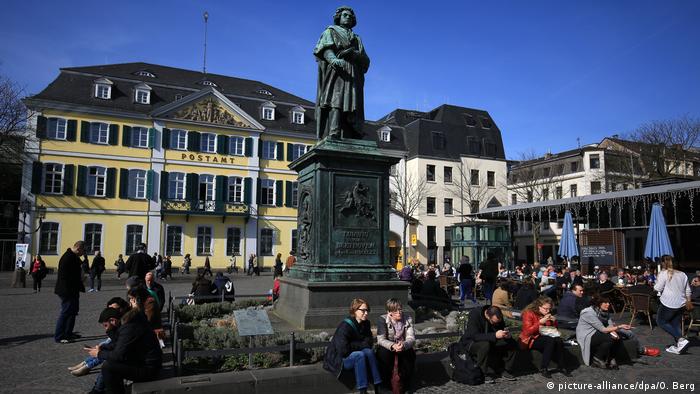THERE are several grants out there to help you slash energy bills if you need extra support.
A number of home improvement grants are currently in place to help those on low income who are struggling.
If you’re struggling on low income, there are certain grants you could be entitled to from the government and energy suppliersThe energy price guarantee currently costs the average household £2,500 for gas and electricity bills â but yours may be higher or lower than this depending on your usage.
But from April next year, that figure will rise to £3,000 .
That means thousands on benefits or low income are on the hunt for ways to keep costs at bay.
But don’t worry â we’ve listed five ways you can save up to £6,000 on energy bills and also make your home more eco-friendly .
Boiler Upgrade Scheme
The Boiler Upgrade Scheme means you might be able to switch your boiler to lower carbon heating to save on bills and become greener.
The scheme set the government back £450million this year, and that money will cover the costs of installation.
You can either apply for:
- £5,000 off the cost and installation of an air source heat pump or biomass boiler
- £6,000 off the cost and installation of a ground source heat pump
Personal finance expert at Cashlady.com, Dan Whittaker, said: “The aim is for UK homes to reduce their carbon output in line with environmental initiatives.
“This means the boiler upgrade scheme does not apply to typical gas boilers, but can be used if you want to install alternative heating sources, such as heat pumps or biomass boilers.”;;
Heat pumps work on electricity and need less energy to operate â the type of heat pump you get might depend on the size of your home, but you can chat to your supplier about that.
The property will need to have enough power to support an installation capacity of 45kWth or kilowatt thermal, which covers most homes.
But they can be quite costly â which has stopped households from buying them in the past.
While homeowners can purchase boilers from between £500 to £1,500, the Energy Saving Trust estimates that a heat pump can cost £6,000 to £8,000.
But it is hoped that the grants from the Boiler Upgrade Scheme will take some of the strain away from people.
You will need to pay the difference if the pump costs more than the grant but the idea is to get the amount closer to what you would pay when installing a gas boiler.
To apply, you don’t do it yourself.
Instead, you will need to find an MSC-certified installer to claim the grant on your behalf.
MSC is the certification scheme for energy efficiency product installers and you can find the nearest ones to you on the MSC website .
It may be worth getting a few quotes to compare which option is best-suited to you though.
The installer will advise on whether a low carbon heating system is suitable for your property and if you can get the grant.
Once you agree a price, the installer will apply for the grant and you will then be contacted by Ofgem, the energy regulator, to confirm that the work is being done on your behalf.
The scheme will run until the end of March 2025.
The Energy Company Obligation (ECO)
The Energy Company Obligation (ECO) is a government-led scheme granting energy-saving improvements to your home if you’re on certain benefits.
The scheme puts the pressure on energy suppliers to make improvements on:
- Insulation (in the loft, inside walls etc)
- Replacing or fixing boilers
The help you get will depend on personal circumstances, so you should get in touch with your local council to find out if they’re taking part, or get in touch with your supplier directly.
Dan said: “Each energy company has a target to meet according to their share of the energy market; so bigger companies will be able to offer more help than smaller companies.”;;
You’ll need to be on one of the following benefits to qualify:
- Child Tax Credit
- Working Tax Credit
- Universal Credit
- Pension Guarantee Credit
- Pension Savings Credit
- Income Support
- income-based Jobseeker’s Allowance (JSA)
- income-related Employment and Support Allowance (ESA)
- Child Benefit
- Housing Benefit
You’ll also be eligible if you live in social housing .
Free cavity wall insulation
Cavity wall insulation can cost between £500 and £600 â so if you got it insulated for free, it would save you roughly £145 a year.
Of course, how much you save will depend on the type of property you live in, but it’s worth calling your supplier to check what can be done.
Dan said: “Uninsulated walls let heat out, which means some of the money you spend on your heating is completely going to waste.”;;
“But not all homes can have cavity wall insulation and so a survey will need to be carried out first.
“This can be arranged free of charge so there is no cost to find out if you are eligible for the grant and if your home is suitable.”;;
Generally, the free insulation is for those who receive at least one of the following benefits, but it also depends on how much you earn.
- Income-related employment and support allowance (ESA)
- Income-based jobseeker’s allowance (JSA)
- Income Support
- Pension Credit Guarantee Credit
- Tax Credits
- Universal Credit
It also depends on what improvement your home needs, where you live, the level of carbon in your home, while some suppliers also take into account how much your home will benefit from insulation.
To have the free insulation installed, you must own your home or have permission from the landlord for the work to be carried out.
If you’ve already insulated your home, you may also be entitled to a refund for the work.
If your supplier won’t insulate your home, the Energy Saving Trust can direct you to organisations who are able to assess your eligibility.
If you live in England and Wales, Ofgem has previously recommended the Each Home Counts Advice website, which offers impartial energy efficiency advice.
If you live in Scotland, you can contact Home Energy Scotland on 0808 808 2282.
And if you don’t qualify for the free scheme but want to get your home insulated anyway, you can find a list of installers and their contact details on the National Insulation Association website.
Free loft insulation
Installing loft insulation also costs roughly £500 â but this will depend on your home.
As with the above grants, you should contact your energy supplier to see if they carry out this service.
Dan said: “You can apply online in most cases. As much as 25% of your home’s heat can escape through the roof, which is why loft insulation can make such a difference.
“To install loft insulation you could expect to pay approximately £500. Getting it installed for free is a big initial saving and could then reduce your energy bills by as much as £150 per year.”;;
Once again, you’re most likely to receive the grant if you’re on one of these:
- Income-related employment and support allowance (ESA)
- Income-based jobseeker’s allowance (JSA)
- Income Support
- Pension Credit Guarantee Credit
- Tax Credits
- Universal Credit
But do have a discussion with your supplier if you’re really struggling.
A new government “eco plus”;; scheme is currently being discussed to allocate £1billion across low income households to make their properties more energy efficient.
This could grant roughly £1,500 to each household who is accepted into the scheme, and it will cover 75% of the energy efficiency installation costs.
The grant reportedly is aimed at middle-earning households who, unlike other schemes, are able to pay.
Green Deal Loans
Green deal loans can help you pay for things like draught proofing , window glazing and heating.
It comes from The Green Deal Finance Company, which is government-led.
You’ll need to know if your provider is Green Deal approved â which you can find out by searching your property provider here. After that, they’ll need to carry out an assessment of your home to see what support you need.
Do keep in mind you need to pay for an assessment â which will be discussed prior to it.
This assessment will be done by a member of the Green Deal, who will visit your home and ask you more about your energy usage and what improvements you’re looking for.
You may be asked whether:
- you own or rent the property
- your home is a listed building, in a conservation area, built before 1900 or constructed in a non-traditional way
- there are access issues, such as access to your loft
- you can provide bills showing your recent energy use
Each provider must tell you:
- how much you’ll pay back
- how long you’ll pay for
But any money you take out can last over the course of 25 years.
You’ll then pay the money back through energy bills.
Dan said: “The idea is that the upgrades in your home will save you money on your electricity bill and these savings then pay for the loan.
“It’s not as attractive an option as the grants, but may be worth considering for those who don’t qualify for the other types of rebates.”;;
For more information on how to apply and who’s eligible, you can call the government home-improvement advice line on 0800 444 202.
If you live in Scotland, you can call the Home Energy Scotland on 0808 808 2282.
More bill help
If you turn your thermostat down by one notch , it can help lower your bills by a whopping £80 a year.
And keeping it at a steady temperature will save even more.
You should also make sure you turn household appliances off and not leave them on standby as doing this could needlessly add as much as £35 onto your bill.
We spoke to a savvy saver who slashed a huge £180 off her energy bill by simply switching off plug sockets.
But if measures in your own home aren’t enough, there’s still time to apply for government schemes that are designed to help you foot rising energy costs.
Here’s a few schemes run by energy suppliers you could be entitled to:
- British Gas Energy Trust
- Bulb energy fund
- EDF’s energy customer support fund
- E.on’s energy fund
- Npower’s energy fund
- Ovo’s debt and energy assistance
- Scottish Power’s hardship fund




